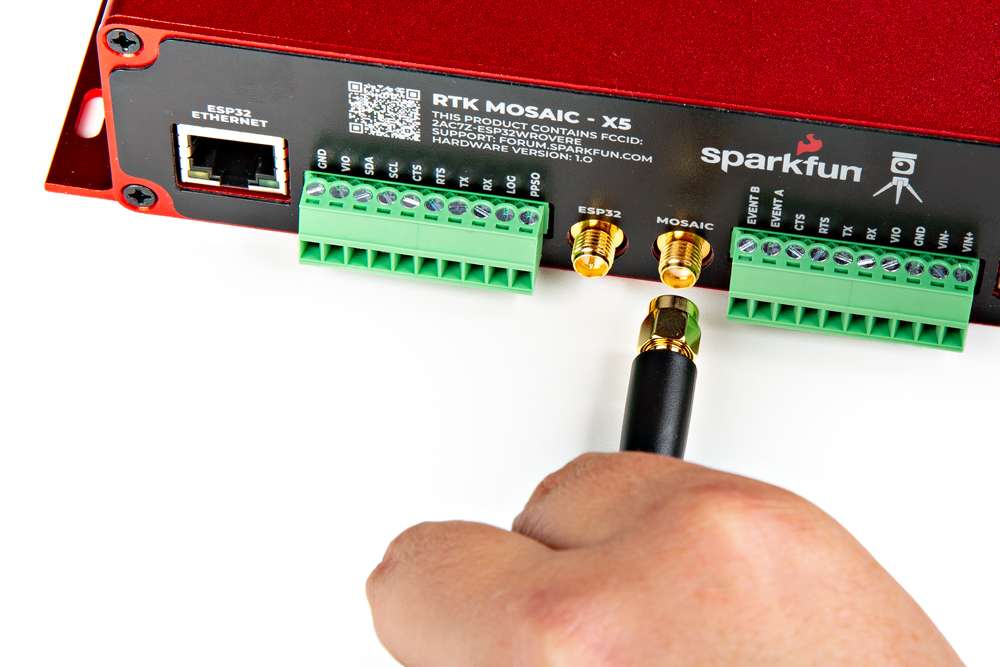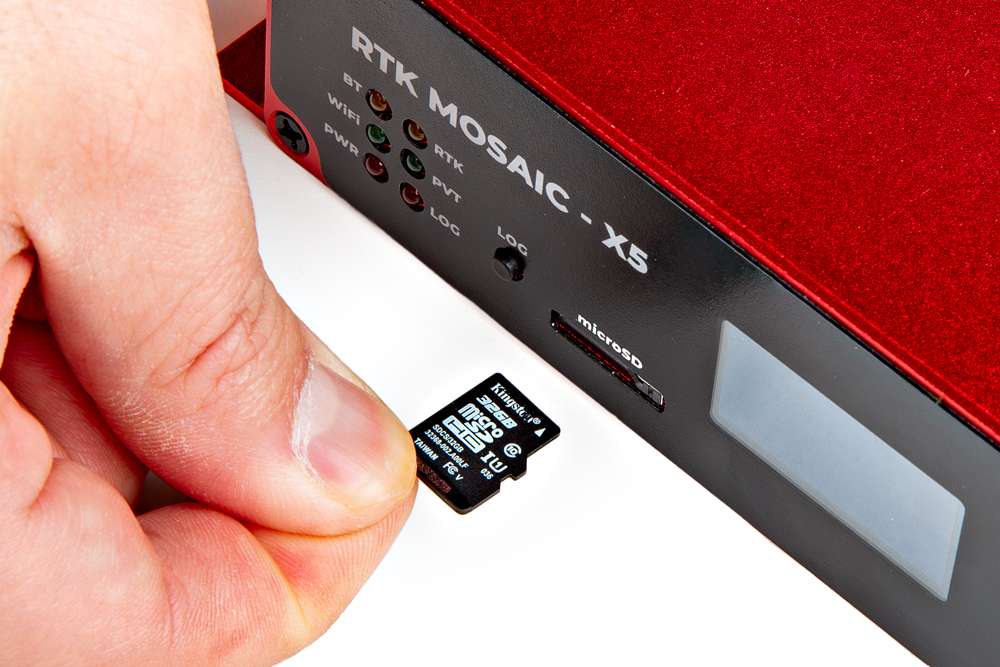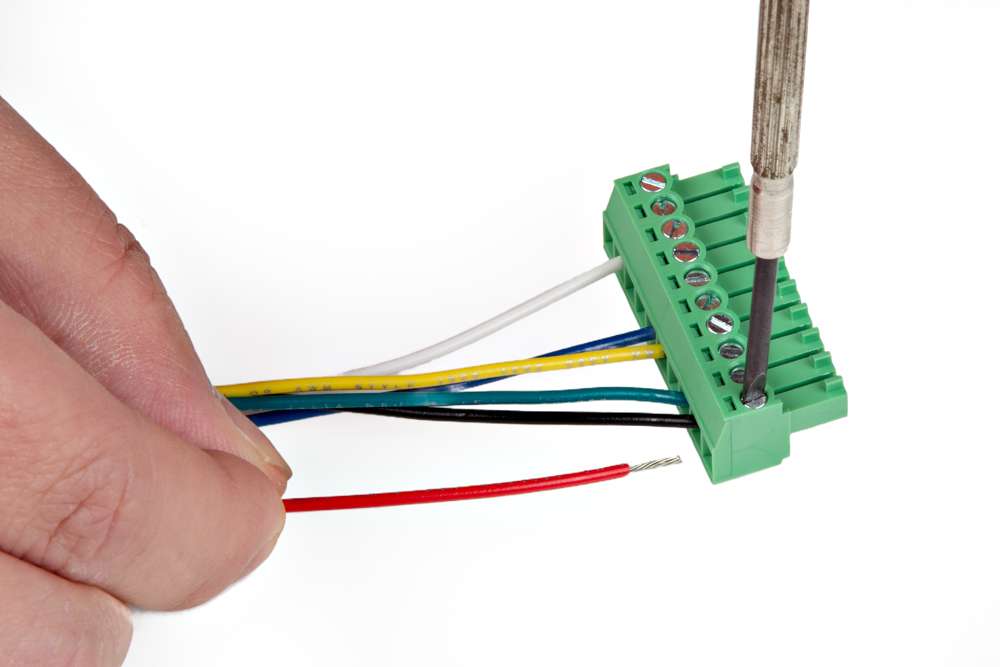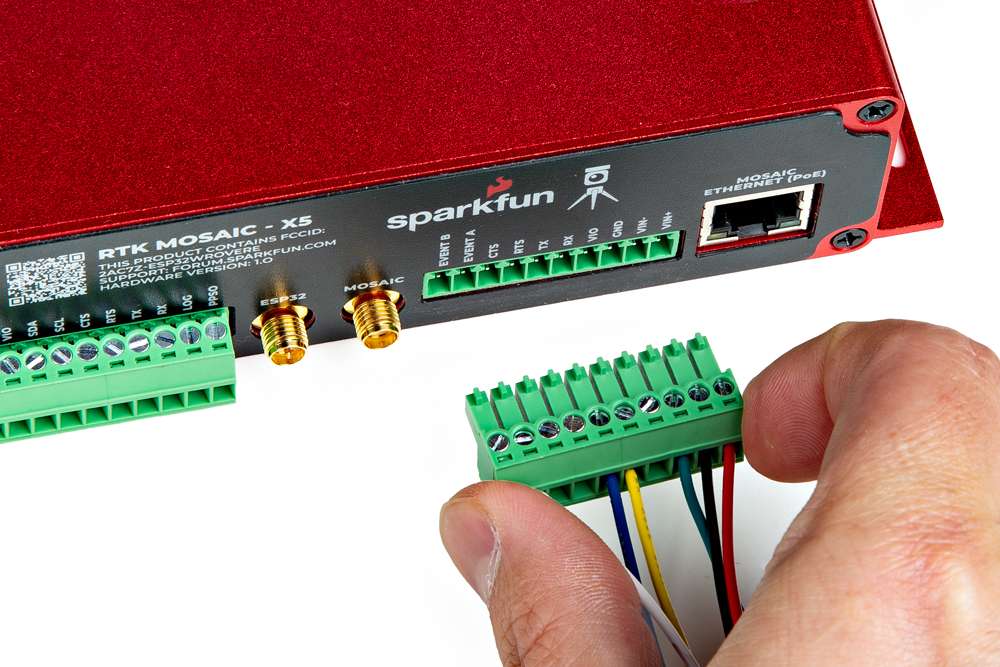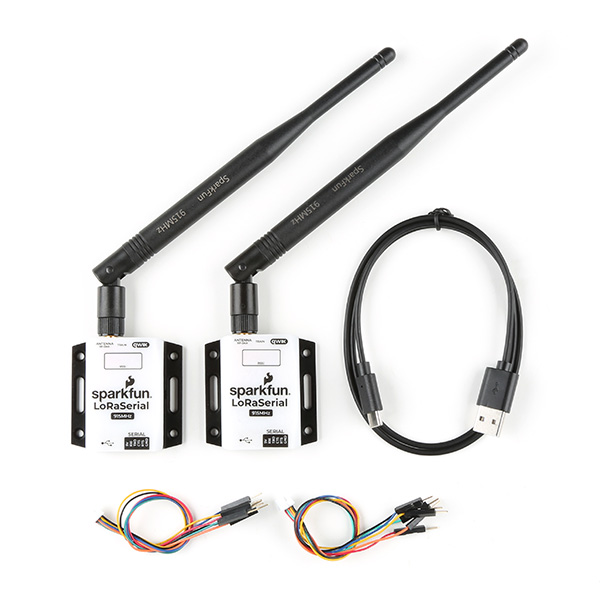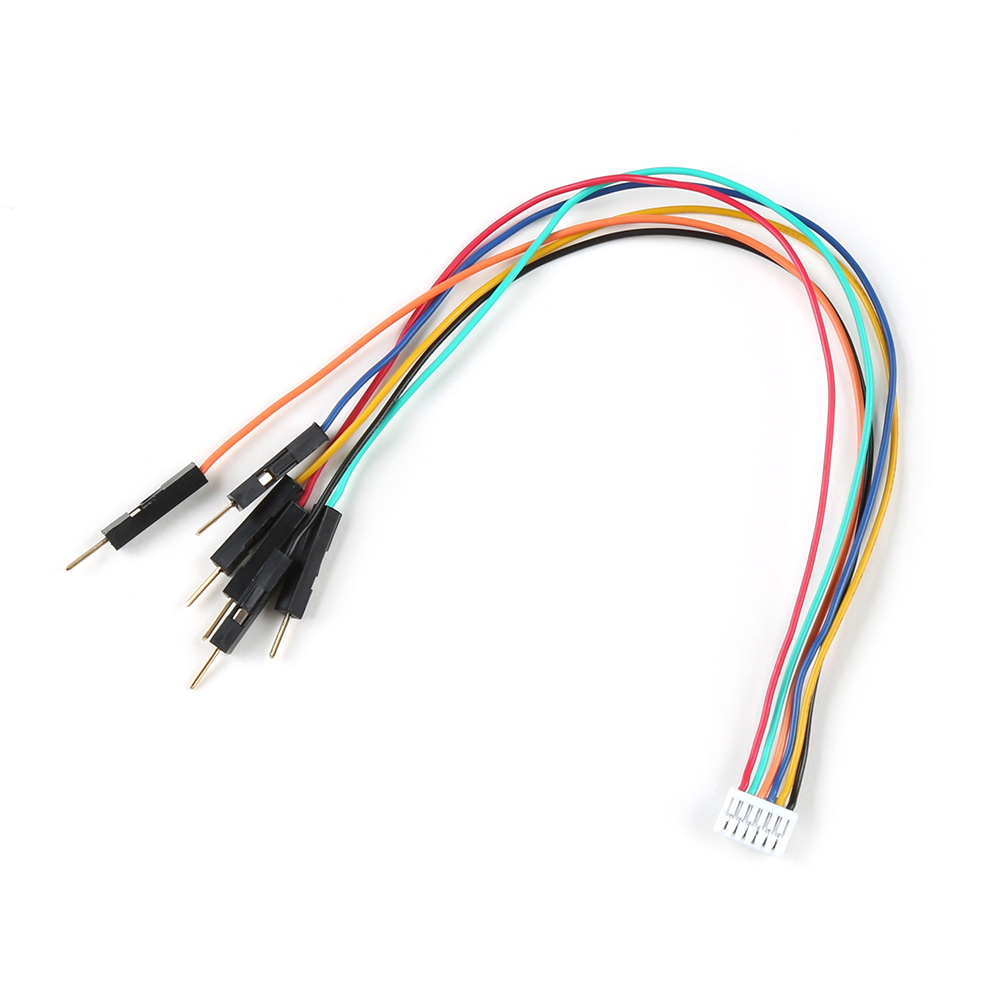Hardware Assembly
Warning
When assembling the RTK mosaic-X5, users should attach any power connections last. While there shouldn't be any issues with hot-swapping peripherals, it is common practice to power electronics as the last step of the assembly process (and the power should be disconnected before removing components).
What is in the Box?
The RTK mosaic-X5 comes packaged as a complete kit, with all the accessories you'd need to set up an RTK base station.
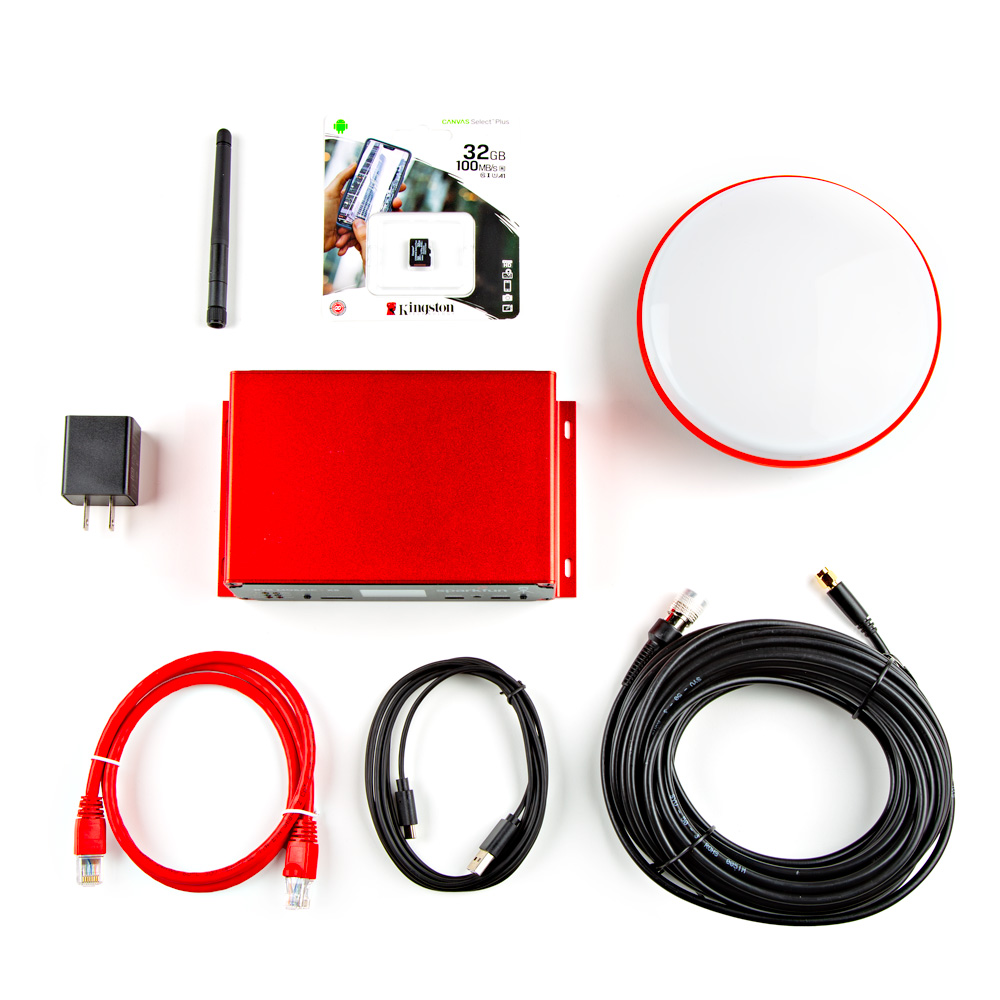
Inside the box, users will find the GNSS antenna, RTK mosaic-X5 in its aluminum enclosure, and another box containing additional accessories. Inside, the accessory box, users will find the CAT-6 Ethernet cable, USB cable, SMA to TNC cable, USB power supply, WiFi antenna, and 32GB SD card.
USB-C Ports
The USB ports are utilized to configure the mosaic-X5 module and ESP32 WiFi settings. Additionally, the USB ports can also be used as a power source for the RTK mosaic-X5.
The USB port to the mosaic-X5 can be used to configure the module through an IP port, for serial communication to stream the GNSS data, and access the SD card as a mass storage device. To connect to the mosaic-X5, users only need to plug a USB-C cable into the CONFIG MOSAIC USB port and their computer.
The RTK mosaic-X5 with USB-C cable being attached.
With the default firmware, the USB port for the ESP32 is used for serial communication to configure the network settings of the Ethernet-to-WiFi bridge. To configure the network settings for the ESP32, users only need to plug a USB-C cable into the CONFIG ESP32 USB port and their computer.
The RTK mosaic-X5 with USB-C cable being attached.
Software Requirements
Depending on their computer's operating system, users may need to install USB drivers to interface with the mosaic-X5 and/or the ESP32. Users may also need to install a terminal emulator for serial communication with the mosaic-X5 and the ESP32.
Antennas
In order to receive GNSS signals, users will need a compatible antenna. With the parts included in this kit, connect the L1/L2/L5 (tri-band) GNSS antenna to the RTK mosaic-X5 using the TNC-to-SMA cable.
Attaching a tri-band GPS antenna to the TNC-SMA cable.
Attaching a TNC-SMA cable to the SMA connector on the RTK mosaic-X5.
For the WiFi connection, users will need a compatible antenna. Connect the WiFi antenna, included in this kit, to the RTK mosaic-X5.
Attaching a 2.4GHz WiFi antenna to the RP-SMA connector on the RTK mosaic-X5.
WiFi Network Compatibility
The ESP32 is only compatible with 2.4GHz bands and cannot access the 5GHz band.
The ESP32 firmware we provide is only compatible with basic SSID and Password WiFi authentication.
- The firmware is not compatible with networks that implement other provisioning methods such as a captive portal, a QR code, or Wi-Fi protected setup.
Mounting Location
Users should mount their GNSS antenna outside, where it will have a clear, unobstructed view of the sky. Avoid areas with nearby buildings, EMF structures (i.e. radio towers or power lines), and vegetation (i.e. trees). These objects can increase errors due to signal muti-path, interference, and elevated noise plane.

Connector Polarity
When selecting antennas and/or cables for the RTK mosaic-X5, double-check the polarity of the connection.
Ethernet Jacks
There are two ethernet jacks on the RTK mosaic-X5, which can be used to provide network access to the mosaic-X5 module. In addition, one of the ethernet jacks supports power over ethernet (PoE) to power the device.
The jack to the mosaic-X5 allows users to provide internet access and power; it supports PoE. To provide network access, users should connect the RTK mosaic-X5 from the MOSAIC ETHERNET (PoE) jack to their local network with the (CAT-6) ethernet cable provided in the kit.
- To power the device, a PoE network switch or PoE injector should be installed in between the network connection to the RTK mosaic-X5.

MOSAIC ETHERNET (PoE) jack.
The jack to the ESP32 allows users to provide WiFi access to the mosaic-X5, by utilizing the ESP32 as a WiFi network bridge.
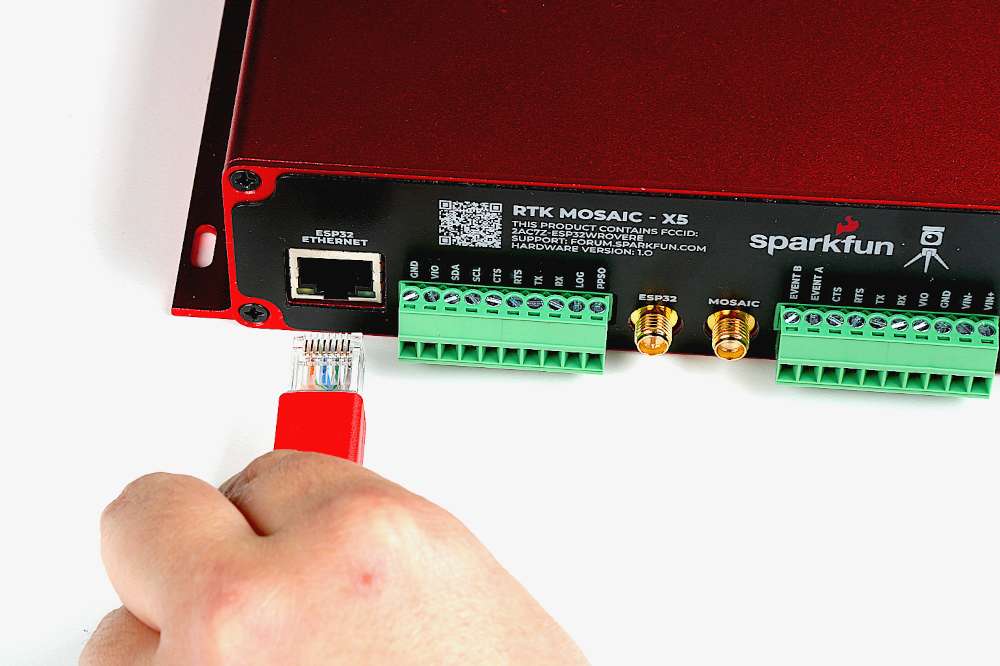
ESP32 ETHERNET jack.
To set up the WiFi bridge, connect the provided (CAT-6) ethernet cable between the MOSAIC ETHERNET (PoE) and ESP32 ETHERNET jacks on the RTK mosaic-X5.
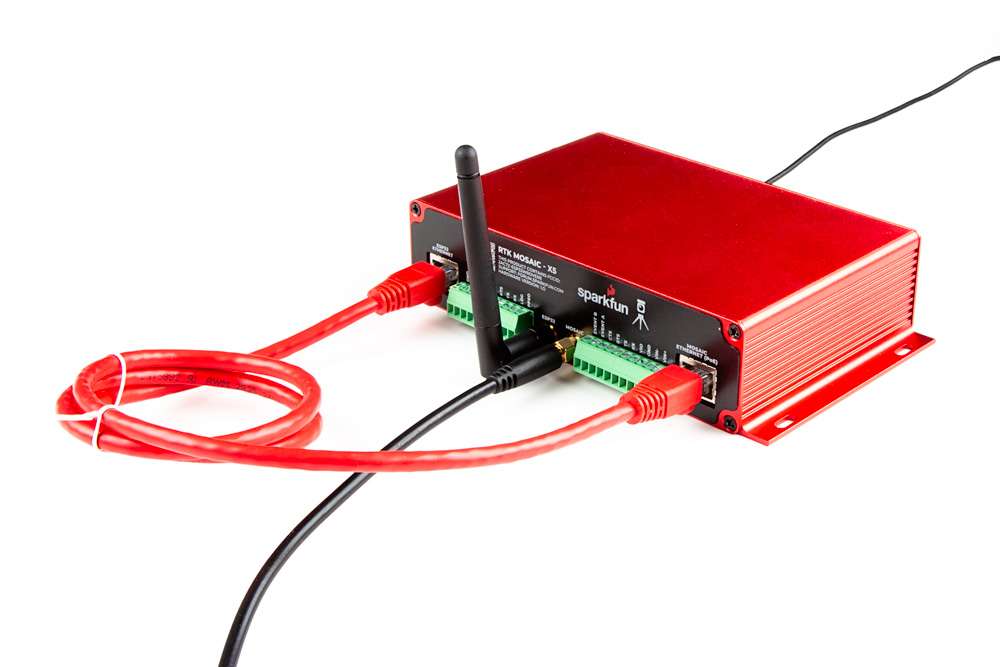
MOSAIC ETHERNET (PoE) and ESP32 ETHERNET jacks.
Configure WiFi Connection
Users will need to configure the WiFi connection for the ESP32, through the CONFIG ESP32 USB-C port.
Cable Management
Users should avoid wrapping the ethernet cable around the WiFi antenna; doing so will result in the loss of data packets and cause the web page to freeze. If users must coil the wiring, we recommend that the coil be placed at least 2-3" away from the WiFi antenna.

Configuration: mosaic-X5 Settings
Users can configure the mosaic-X5 module through the network connection (i.e. ethernet or WiFi).
SD Card Slot
An µSD card slot is available for users to log and store data, locally on the board. Users will need to insert a compatible SD card and configure the mosaic-X5 module for data logging.
Inserting an SD card into the RTK mosaic-X5.
SD Card Compatibility
The mosaic-X5 supports µSD cards with a FAT32 file system (i.e. only cards up to 32GB in size).
Initial Configuration
Before logging can take place, it is necessary to define a "logging stream" using the Logging page or RxTools. Streams can contain NMEA or SBF (Septentrio Binary Format) data; SBF can contain RTCM and/or RINEX.

Instructional Video
How to log data to the SD card of the Septentrio mosaic receiver module
Button Operation
There are multiple ways to configure and enable data logging to an SD card. However, the simplest method is with the LOG button. Once the stream is defined,
- Pressing the LOG button (< 5s) toggles data logging to the SD card on and off.
- Holding the LOG button for more than 5 seconds (> 5s) and then releasing it, will force the board to:
- Unmount the SD card if it was mounted
- Mount the SD card if it was unmounted
For more information, please reference the SD Card Slot section.
IO Terminals
Users can easily attach accessories to the RTK mosaic-X5 by wiring them into the terminal blocks on the back of the enclosure.
Connecting a wire to the terminal block.
Multiple Connections
For multiple connections or wiring harnesses, users can disconnect the terminal blocks from their sockets on the RTK mosaic-X5.
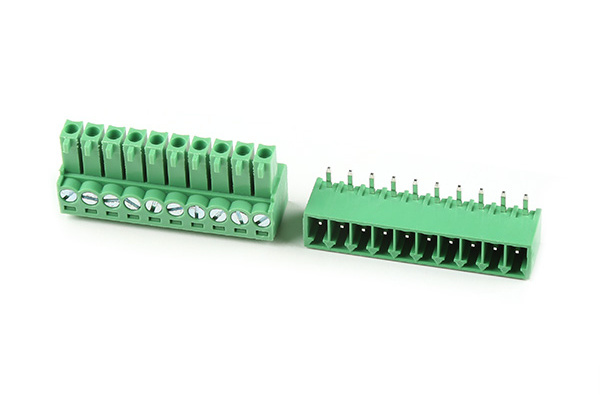
Users can wiggle or use a soft/rigid object to carefully pry the terminal block off from its connector. In the picture below, a plastic name tag (~1.5mm thick) is used to carefully pry the terminal block up. We have also found the edge of a PCB ruler works great too.
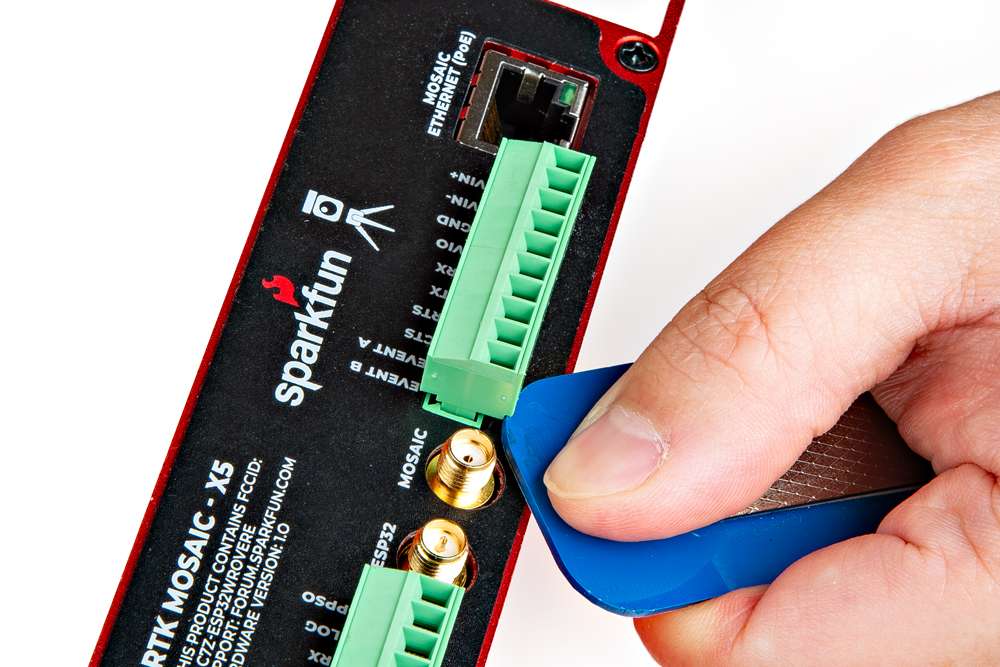
Once wired up, users can simply push the terminal block back into its socket.
Warning
To avoid shorts or damaging the RTK mosaic-X5, verify the wiring with the labels on the back of the enclosure.
Connecting a Radio
Radio Transceivers
Users can also utilize the terminal blocks to interface with one of our radio transceivers for RTK correction data. We recommend utilizing our breadboard cable to connect those radios to the RTK mosaic-X5.
Wiring the Connections
When connecting the RTK mosaic-X5 to one of our radio transceivers, users need to be aware of the pin connections between the products. Although the labels on each device may vary, their pins will function the same (except for the power input/output pins).
Warning
Please remember that the power output (VIO) is preset to 3.3V by default. When utilizing the SiK telemetry radios, users will need to open the enclosure and move the VIO switch.
Below is a diagram of the pin connections for the 6-pin JST GH connector on the radios, which should be also labeled on their enclosure.
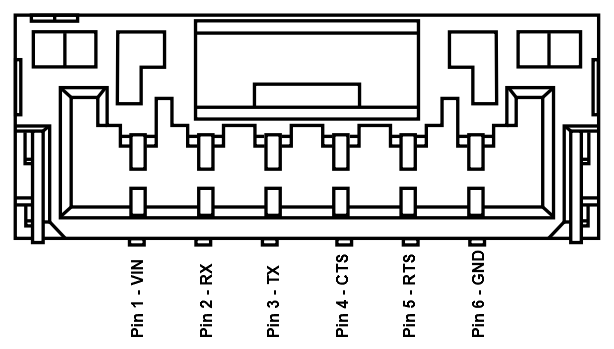
| Label | 5V |
RX/RXI |
TX/TXO |
CTS |
RTS |
GND |
|---|---|---|---|---|---|---|
| Function | Voltage Input - SiK: 5V - LoRaSerial: 3.3 to 5V |
UART - Receive | UART - Transmit | Flow Control Clear-to-Send |
Flow Control Ready-to-Send |
Ground |
Below are the UART pin connections to the mosaic-X5 GNSS receiver, which are labeled for the terminal blocks on the RTK mosaic-X5 enclosure.
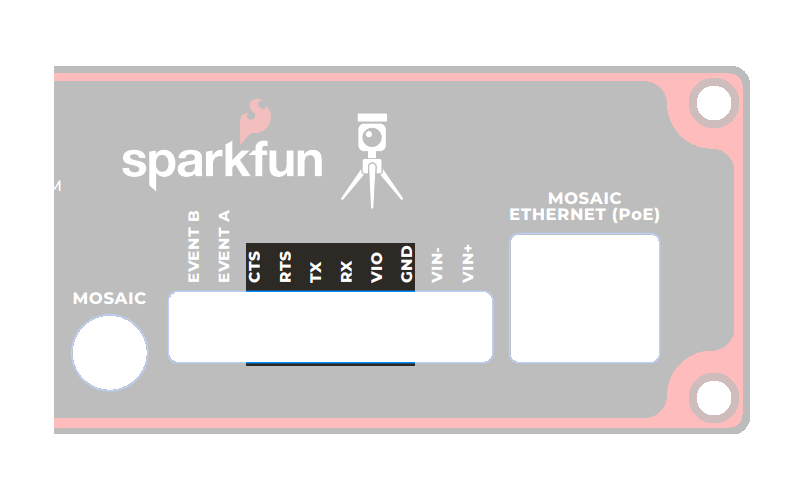
| Label | VIO |
RX |
TX |
CTS |
RTS |
GND |
|---|---|---|---|---|---|---|
| Function | Voltage Output - 5V or 3.3V (see switch) |
UART - Receive | UART - Transmit | Flow Control Clear-to-Send |
Flow Control Ready-to-Send |
Ground |
When connecting the RTK mosaic-X5 to either of the radios, the wiring connections should follow the table below. If the flow control is not enabled, then only the RX, TX, and GND pins are utilized. As an example, the wiring between a host system (i.e. RTK mosaic-X5) and the LoRaSerial Kit radio is shown in the image below; as documented in the LoRaSerial product manual.
| RTK mosaic-X5 | RX | TX | RTS | CTS | GND |
|---|---|---|---|---|---|
| Radio | TX | RX | CTS | RTS | GND |
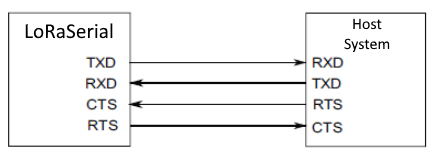
Source: LoRaSerial product manual
Pairing Radios
By default, the radios in the LoRaSerial Kit - 915MHz are pre-configured for point-to-point communication and a paired with each other. For instructions on other configurations, please reference the product manual for the LoRaSerial Kit.





